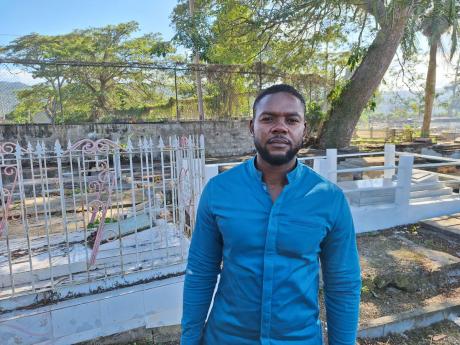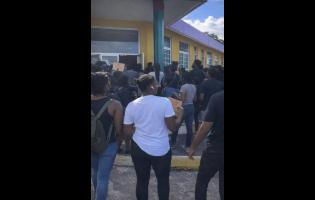New life for Pye River Cemetery
A beautification project at the Pye River Cemetery in St James is expected to significantly help grieving families by improving access to their loved ones' interment sites.
Plans are also on to adopt a cutting-edge cemetery directory, according to Montego Bay Mayor Richard Vernon, who is spearheading the initiative. The project is being carried out under the St James Municipal Corporation's $7-million operational budget, which covers maintenance for the 15 cemeteries in the parish.
Pye River was established in 1896, "and is home to many of the historical families of this city and municipality", Vernon told THE STAR.
The cemetery is currently unofficially closed to the public, with only previously purchased interment spaces and less than 10 pauper burial spots remaining.
Vernon described the initiative as a labour of love, aiming to restore dignity to the long-neglected cemetery, which had become an unsightly burden for many Montegonians.
"We are clearing the cemetery to bring it to an ideal aesthetic. This project started about a week ago and is slated to be completed within another two weeks. The project's components include clearing the area, cleaning the graves, and removing the vegetation that heavily surrounds the gravesites. We want to whitewash many of the blank ones; the ones without the headstones and the writing," Vernon said.
He continued, "We also want to erect a directory for the cemetery so that persons, upon visiting their loved ones, can identify their burial spots easily."
While recognising that the directory will be no simple job, as many of the graves have been abandoned without headstones or identifiable information, Vernon told THE STAR that his team is willing to engage with grieving families and churches to accomplish the project.
"Some of the graves have their names inscribed into the slab that covers them and some have headstones, so we're going to get a team to register each grave to create a directory. However, the ones without the requisite information, we are going to leave as unidentified graves. If the family members can help us identify the deceased, then we will use that information. Some persons come from time to time to visit the deceased and they, better than us, can say who these persons are," said the mayor.
When asked about sustaining the Pye River Cemetery's appearance, Vernon told THE STAR that his team is committed to maintaining the 15-acre facility. He shared that routine clearing of bushes and grass will become a norm at the cemetery.
"We're getting the vegetation down to earth level so that it is easier to maintain. One of the main challenges with these cemeteries is that they are allowed to grow beyond a manageable amount and as a result, it takes a massive amount of funding to get it to a suitable condition. So what we're doing is very invasive, and then the team that is assigned to the cemetery will carry out routine maintenance once we have completed," he said.
Meanwhile, the mayor stated that this beautifying initiative is a big step forward in his efforts to continue the growth of the Second City.
"Persons might feel as if priorities are misaligned, but they're not. We have a multidimensional approach to development within the city of Montego Bay and believe that how we treat the most vulnerable among us is a definition of how we are as a society. Persons here, of course, are obviously gone and can't take care of themselves, so we have to ensure that the internment is in a dignified area. Persons should not be clearing bush to see their loved ones. Many of these deceased persons have family members living within the diaspora and from time to time, they come home to go to the intern spot and have a little quiet moment with their loved ones. We have to ensure that this cemetery can facilitate such activities," he said.
At the same time, Dwight Crawford, councillor for the Spring Garden Division where the cemetery is located, is happy with the work being done. Crawford also criticised families for not playing a role in maintaining their deceased relatives' interment spots.
"Everybody looks over here and complains about what is not being done. The large majority, about 98 per cent of persons, never return to this place after they have laid their loved ones to rest here. So I thank the one or two that have been coming and trying their best to help," said Crawford.






































